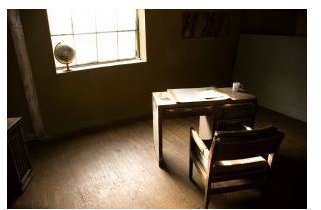Guidelines for Office Space Planning: Spruce Up Your Space!
If you’re a small business owner, chances are you’re renting office space. It’s also a good guess that you don’t have a lot of money to spend on
office space planning! The good news is that some simple guidelines to office space planning don’t require a fortune. In this article, we look at specific guidelines for office space planning and how you can apply them in your own office.
Planning Basics
Before you buy or move in any furniture, you need to be sure of what you’re working with.
Visit your new office space before you move in and take measurements in the various rooms and offices. Sketch each office space on a piece of paper, including the dimensions related to doors and windows. Make several copies of your sketches, and then use them to try out different layouts and ideas on paper. If you can draw your office space to scale, that’s even better, because then you can use scale cutouts of the furniture you’re considering to plan your layouts, and that will give you a much better idea of your logistical limitations.
Ergonomics
You’ve probably heard ergonomics included among guidelines for office space planning, but you might not have thought about how ergonomics applies to office space planning. In essence, ergonomics is the science of designing environments that are easy to use and healthy. It’s about choosing furniture that is the right height and chairs that are adjustable so people of different heights can use them. This term also reflects design that avoids repetitive strain injuries caused by working in an environment that’s not well designed.
The most important aspect of ergonomics, in the small office environment, is the office chair. Choose a good, well padded, firm office chair that has a swivel, tilt and lift mechanism. This will mean that no matter what the desk you’re using looks like, you can adjust your height and positioning. Also remember that ergonomics focuses on ensuring that everything you need regularly is within arm’s reach, so if you’re going to be using your chair most of the day, design and lay out your office around its positioning.
Lighting
You might not be able to do much about the size or shape of your offices in rented office space, but you can do something about your comfort while you’re working, and a big part of that is lighting.
Make sure that the lighting in your office is adequate. Try to incorporate natural lighting or area lighting wherever possible. Fluorescent lighting may be the most common in office space, but remember that it’s unnatural and gives off a greenish tinge, so try to spend a little on upgrading to better lighting while you’re planning and laying out your office space.
Storage
Storage is the final critical element in basic office space planning. Having enough storage can make even the smallest space workable, and it can help to keep your office uncluttered and neat.
Free standing shelving units are a great place to start, when you are choosing storage units for your office. They’re narrow enough not to take up too much space in small offices, and they can even be used as dividers in open plan office spaces. You can also choose a variety of containers for your shelving, such as files, boxes, and other items, to create a tailored and chic storage unit without breaking the bank.
Image credit:
Resource:
University of Michigan. Space Utilization Initiative: Office Space Guidelines, retrieved at https://www.provost.umich.edu/space/guidelines/office.html
